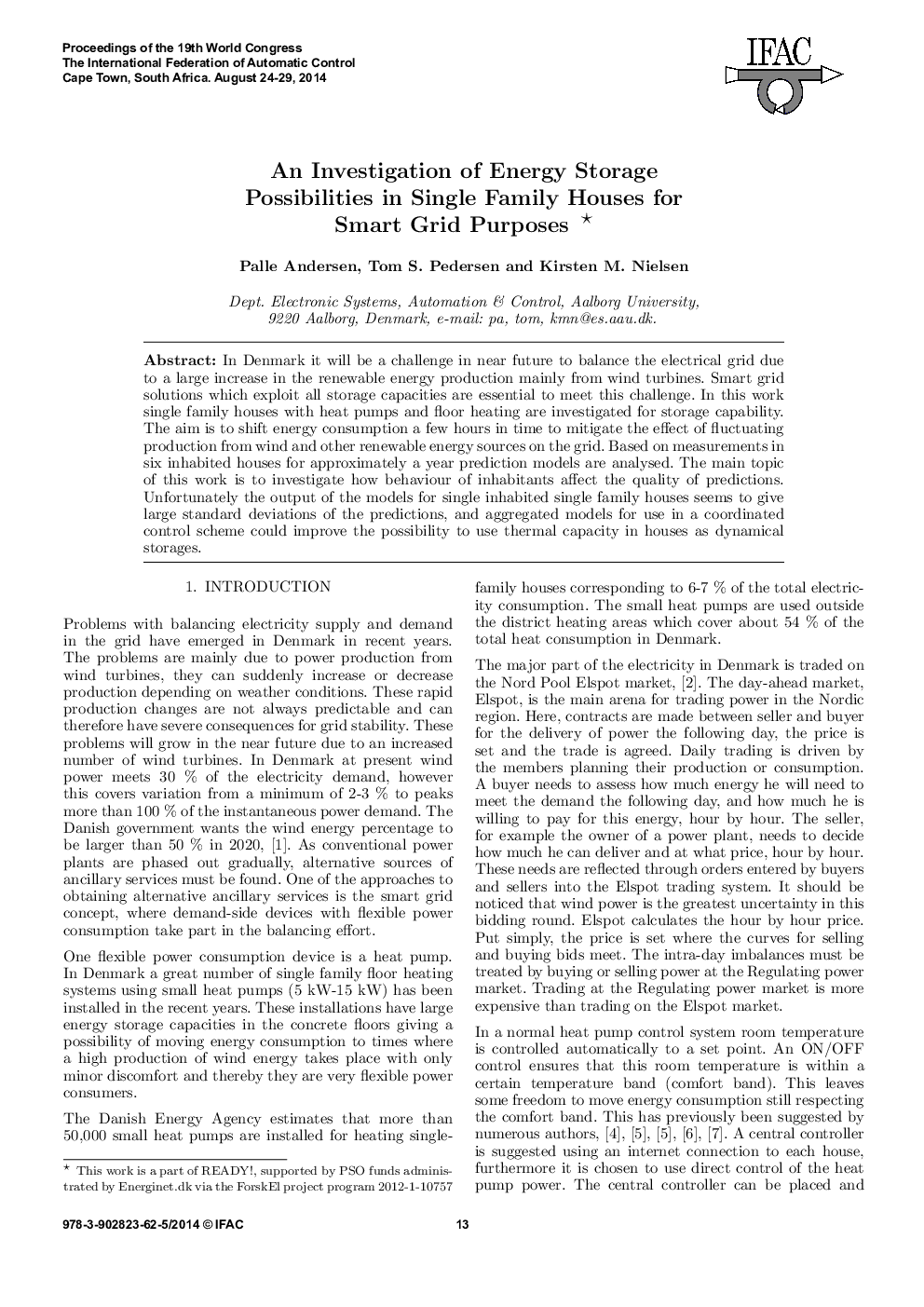| Article ID | Journal | Published Year | Pages | File Type |
|---|---|---|---|---|
| 712123 | IFAC Proceedings Volumes | 2014 | 6 Pages |
In Denmark it will be a challenge in near future to balance the electrical grid due to a large increase in the renewable energy production mainly from wind turbines. Smart grid solutions which exploit all storage capacities are essential to meet this challenge. In this work single family houses with heat pumps and floor heating are investigated for storage capability. The aim is to shift energy consumption a few hours in time to mitigate the effect of fluctuating production from wind and other renewable energy sources on the grid. Based on measurements in six inhabited houses for approximately a year prediction models are analysed. The main topic of this work is to investigate how behaviour of inhabitants affect the quality of predictions. Unfortunately the output of the models for single inhabited single family houses seems to give large standard deviations of the predictions, and aggregated models for use in a coordinated control scheme could improve the possibility to use thermal capacity in houses as dynamical storages.
